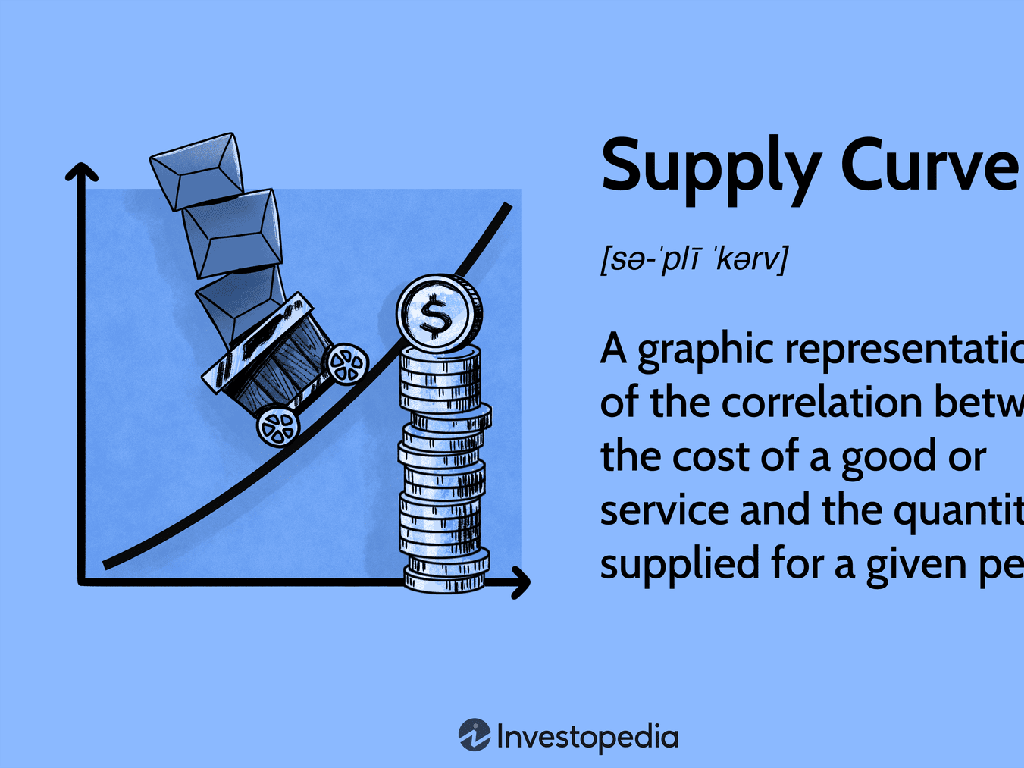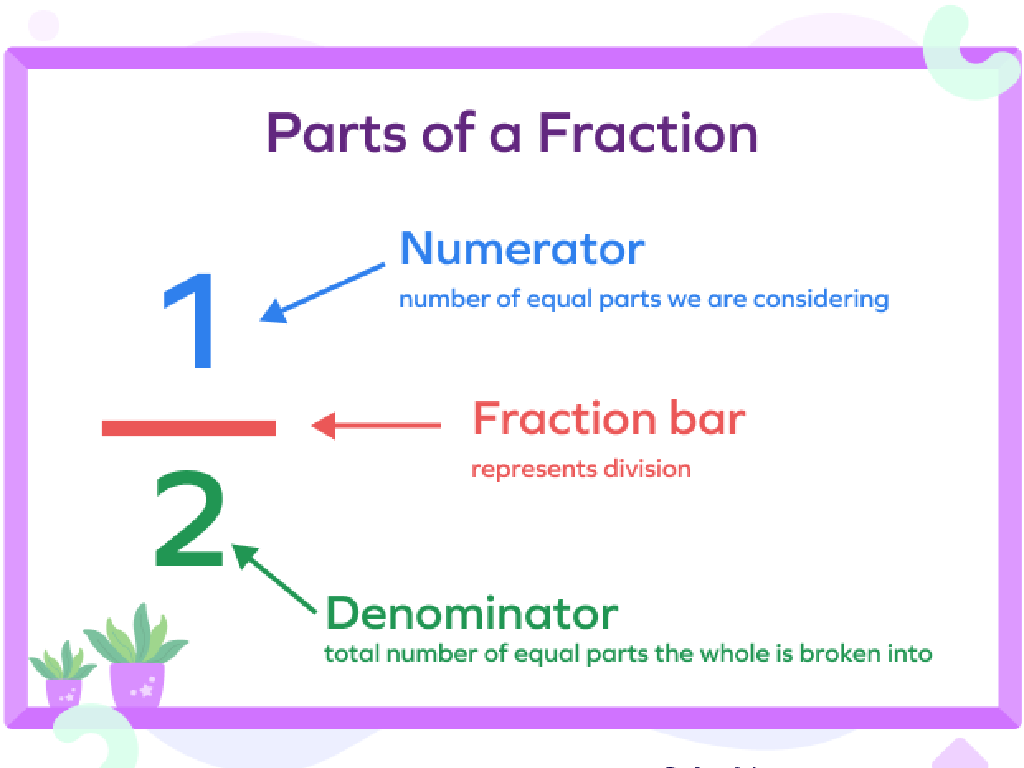Evaluate Powers With Negative Or Zero Exponents
Subject: Math
Grade: Eighth grade
Topic: Exponents
Please LOG IN to download the presentation. Access is available to registered users only.
View More Content
Understanding Exponents: Negative & Zero Powers
– Exponents represent repeated multiplication
– Recap: Exponents have a base and an exponent
– Zero exponents always equal one
– Any number raised to the power of zero is 1 (e.g., 5^0 = 1)
– Negative exponents equal the reciprocal
– For negative exponents, use the reciprocal (e.g., 2^-1 = 1/2^1)
|
Begin with a brief review of what exponents are, emphasizing that they are a shorthand for repeated multiplication. Clarify the parts of an exponent: the base and the exponent (or power). Then, introduce the concept of zero exponents, explaining that any base (except zero) raised to the power of zero is 1. This is a fundamental rule that often confuses students, so use examples to illustrate. Next, explain negative exponents and how they represent the reciprocal of the base raised to the positive exponent. Provide examples to demonstrate this concept. Encourage students to practice with different bases to solidify their understanding. The goal is for students to leave the class with a clear understanding of how to evaluate powers with negative and zero exponents.
Understanding Exponents
– Exponentiation: Base and Exponent
– Exponentiation involves a base (2) and an exponent (3)
– Example: 2^3 = 2 x 2 x 2
– 2 raised to the 3rd power equals 8
– Exponents indicate repeated multiplication
– 2^3 means multiplying 2 by itself 3 times
– Zero and negative exponents rules
– Learn how 0 or negative exponents affect values
|
Begin with a quick review of what an exponent is, emphasizing the terms ‘base’ and ‘exponent.’ Use 2^3 as a clear example to show that exponentiation means multiplying the base (2) by itself as many times as the exponent indicates (3 times). This will help students understand the concept of repeated multiplication. Then, introduce the rules for zero and negative exponents, explaining that these are special cases in exponentiation. Make sure to provide examples for zero and negative exponents to illustrate how they work. Encourage students to think of the exponent as an instruction for how many times to use the base in multiplication, and to remember that exponents are not just for positive numbers.
Understanding Zero Exponents
– Zero exponent rule: any number^0 = 1
– Exploring the zero exponent rule
– Why does a^0 always equal 1? Let’s find out.
– Example: 5^0 equals 1
– No matter the base, if the exponent is 0, the result is 1
– Example: 100^0 equals 1
– Large or small, any base to the power of zero is 1
|
This slide introduces the concept of zero exponents, which is a fundamental rule in mathematics that states any base raised to the power of zero equals one. It’s crucial for students to understand this concept as it forms the basis for more advanced topics in algebra and calculus. Provide examples with different bases to show that the rule applies universally. Encourage students to think about the pattern of decreasing powers of a number to understand why the rule makes sense: as you divide by the base to decrease the exponent, you approach 1. For instance, 5^2 is 25, 5^1 is 5, and 5^0 is 1. This pattern helps to reinforce the concept that any number to the power of zero is 1.
Understanding Negative Exponents
– Negative exponents mean reciprocals
– For a^-n, think 1/a^n. It’s the reciprocal!
– Grasping the concept of reciprocals
– A reciprocal is 1 divided by the number, like 1/2 is the reciprocal of 2
– Example: 2^-1 equals what?
– 2^-1 = 1/2^1 = 1/2. The negative exponent flips the base to the denominator
– Simplifying expressions with negative exponents
|
This slide introduces the concept of negative exponents and how they relate to reciprocals. Start by explaining that a negative exponent indicates the reciprocal of the base raised to the positive exponent. Clarify the concept of reciprocals, emphasizing that it is simply flipping the numerator and denominator. Use the example 2^-1 to show how the negative exponent moves the base to the denominator and changes the sign of the exponent. Encourage students to practice with additional examples to become comfortable with the process of simplifying expressions that contain negative exponents.
Working with Negative Exponents
– Converting negative to positive exponents
– Invert the base and make the exponent positive
– Example: 3^-2 becomes 1/3^2
– 3^-2 = 1/3^2 = 1/9 demonstrates this
– Practice: Simplify 4^-3
– Apply the rule: 4^-3 = 1/4^3 = 1/64
|
This slide introduces the concept of negative exponents and how to work with them. Start by explaining that a negative exponent indicates the reciprocal of the base raised to the absolute value of the exponent. Use the example 3^-2 to show this process step by step. For the practice problem, guide students to apply the same principle to simplify 4^-3. Encourage students to work through the problem on their own, then discuss the solution as a class. This exercise will help solidify their understanding of negative exponents and prepare them for more complex problems.
Simplifying Expressions with Exponents
– Rules for zero exponents
– Rules for negative exponents
– Example: 10^0 x 10^-2
– 10^0 equals 1, and 10^-2 means 1/10^2
– Step-by-step simplification
– Simplify 1 x 1/100 to get 1/100
|
This slide aims to consolidate the students’ understanding of the rules for zero and negative exponents. Begin by reviewing that any number raised to the zero power is 1. Then, explain that a negative exponent represents the reciprocal of the base raised to the absolute value of the exponent. Use the example 10^0 x 10^-2 to show how these rules are applied in tandem. Walk the students through the process of simplifying the expression step by step, ensuring they understand each stage of the simplification. Encourage students to practice with additional examples to gain confidence in simplifying expressions involving zero and negative exponents.
Class Activity: Exponent Challenge
– Pair up and solve exponent problems
– Use whiteboards for answers
– Discuss solving methods
– Did you use the rule of negative exponents or another strategy?
– Reflect on learning outcomes
– Share what you’ve learned about negative and zero exponents.
|
This activity is designed to promote collaborative learning and problem-solving skills. Students will pair up to tackle a series of problems involving negative and zero exponents. By using whiteboards, students can easily display and adjust their answers. Encourage them to discuss the different methods they used to solve the problems, such as the rule of negative exponents (e.g., x^-n = 1/x^n) or the concept that any number to the zero power is 1. After solving, students should reflect on their learning outcomes and share insights with the class. Possible variations of the activity could include solving for unknown exponents, converting between negative and positive exponents, and simplifying expressions with zero exponents.
Mastering Exponents: Recap & Homework
– Review negative & zero exponents
– Remember, a^-n = 1/a^n and a^0 = 1
– Significance in algebra
– Grasping exponents is crucial for algebraic proficiency
– Homework: Exponent worksheet
– Complete the provided worksheet to practice
– Practice solidifies understanding
|
As we conclude today’s lesson, it’s important to recap the concepts of negative and zero exponents. Understanding these concepts is vital as they form the foundation for more advanced algebra topics. For homework, students are expected to complete the exponent worksheet, which includes a variety of problems to reinforce their learning. This practice will help solidify their understanding and prepare them for upcoming lessons that build on these principles. Encourage students to attempt all problems and remind them that struggling with complex problems is a part of the learning process. The next class will begin with a discussion of any difficulties encountered in the homework.





